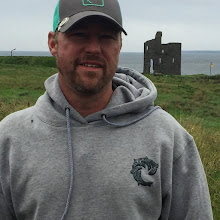If I could choose our country's top five strategic priorities for technology and innovation, they would be:
- Diversify the energy ecosystem
- Transform human transportation
- Open more government data
- Boost resurgence in manufacturing
- Transform farming practices
Diversifying the energy ecosystem means that we diversify production and consumption. Diversifying production means that we increase the number of different means for producing energy in terms of both type and scale; everything from storing the energy you produce in your exercise machine up to expanding nuclear. If they ever figure out the photosynthesis model of using the sun then we're literally set for life. Diversifying energy consumption means that we increase the number of different kinds of energy a consumer can use and decrease the amount of energy the consumer requires in order to be effective. There will always be both high energy and low energy systems that have purpose and value. Efficiency of consumption still matters. Ideally we will produce and require less energy to do more. This is not a pipe dream. This is innovation and efficiency.
Transforming human transportation means that we change the way we think about how people move around geographically. We need to look at the logistics of national and local transportation free from the constraints of mode. When it comes to moving people, we will also place great emphasis on the preferences of the individual. These might be combined into the notion of demand. Given an understanding of demand (past, present, future?) we can make better decisions among biomotive, automotive, locomotive, hydromotive, and aeromotive modes of transportation (most of which are not English words, by the way). I'm not sure I have good answers, but I'm certain transportation is A) complex and B) broken. That usually tells me we need to turn the problem on its head and look at it sideways to recognize what will work.
Opening more goverment data means that local, state, and federal governments and their agencies commit to putting all information already in the public domain online in standard, ubiquitous formats that are easy to publish, syndicate, transform, integrate, and view. Governments should spend less time and money on applications (analysis and visualization tools, websites/portals). Governments should spend more time and overall less money on opening up our data vice building applications. Naturally, government-internal uses of data will require tools and applications. But in all cases better tools and applications will emerge when data is open. This may be the easiest and least costly priority to implement.
Boosting resurgence in manufacturing means that we recreate and reinvigorate our strength and ingenuity as skilled manufacturers. More specifically, we invest in:
- High-tech, lightweight manufacturing; tools, devices, sensors, robotics and the like
- Transportation manufacturing; planes, trains, and automobiles
Transforming farming practices means we find the middle ground between niche farming and factory farming. Niche farming is not efficient or practical and is more costly than Americans will endure. The factory farming model is failing in the current environment. There is entirely too much land not being farmed in an effort to control prices and trade, yet prices are high and trade is poor. Some argue that cheap food is gone. I'm not so sure. The reason sited is the high cost of transportation undercutting the (tightly) controlled production practices that created cheap food in the first place. I agree those practices should end. But as long as we are purposely not farming land I don't know how we can make accurate determinations about price realism in food. Here in Virginia and in southerly neighbor North Carolina we have acres and acres of underutilized, fertile farmland. Whether it is land that goes unused because a mid-sized farmer can't compete in a factory-farm environment or old tobacco farms that must transform or die, a new strategy for farming can make use of that land, uplift local economies, keep choices up and prices low.
Then again, what do I know? This is more feeling than fact. I could be terribly, terribly wrong. Clearly I'm short of specifics. What I'm after is strategic priorities. This feels like what matters.


